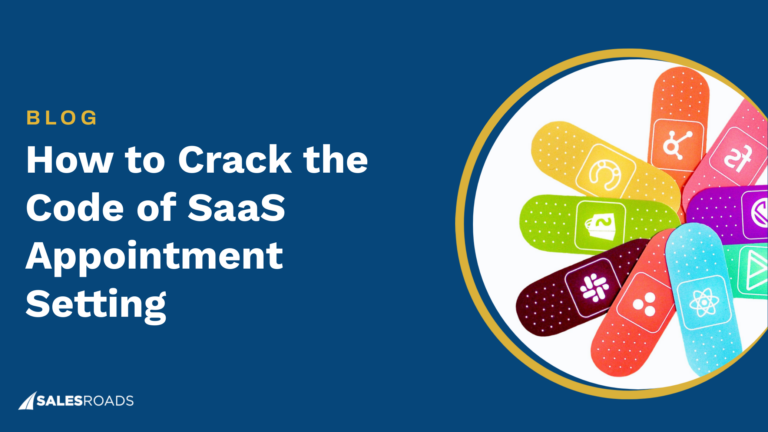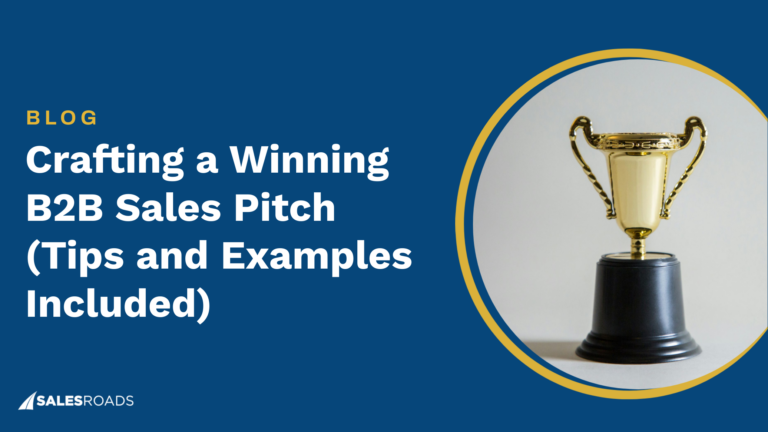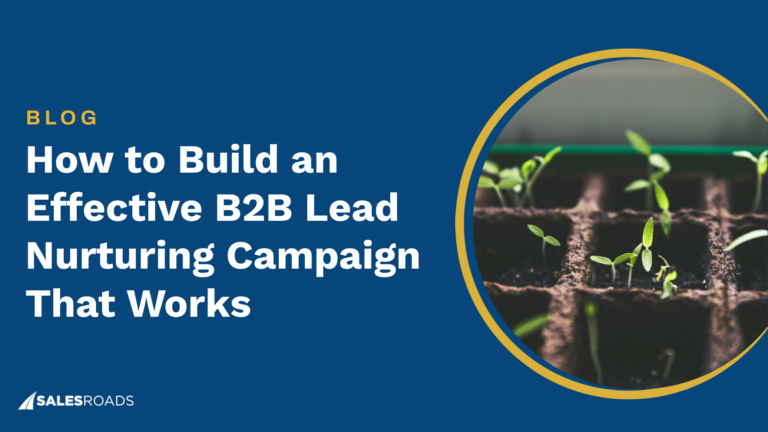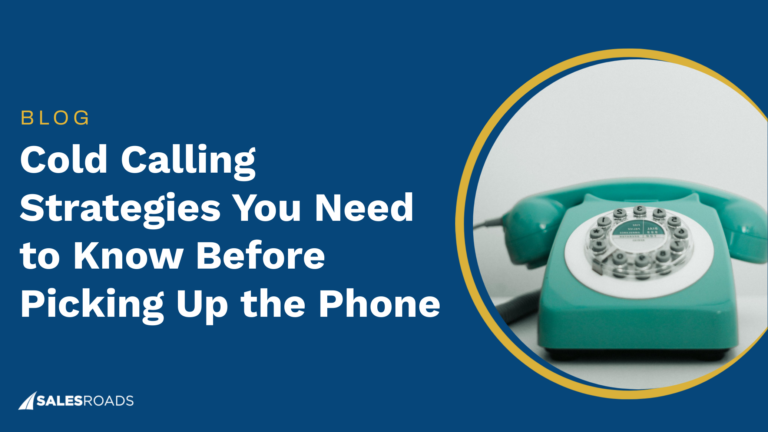List building is not just about aggregating contacts; it’s about developing a critical asset that forms the backbone of successful sales strategies, directly influencing the efficiency and effectiveness of cold outreach and the overall success of appointment setting efforts.
As Marlene Mayes observes, “Creating an effective B2B prospect list is easier said than done. It requires a strategic approach, meticulous research, and a deep understanding of your target audience.” This insight opens the door to an exploration of the multifaceted process of list building, a process that is fundamental to the success of any sales endeavor.
Understanding the Fundamentals of List Building
For companies venturing into cold outreach, the creation and maintenance of a quality prospect list is a pivotal step. Whether you’re considering building your sales program in-house or outsourcing it, understanding the fundamentals of list building is necessary.
In the U.S. alone, businesses grapple with significant financial losses due to invalid data, amounting to a staggering $3.1 trillion annually in the B2B sector.
This reality underscores the importance of accuracy in data management, as a poorly constructed list can lead to numerous setbacks. These include wasted efforts and a lower success rate, which isn’t merely about lost time. It’s also about missed opportunities and potential damage to your brand if outreach efforts are perceived as untargeted or intrusive.
The comparison table below illustrates the stark contrast in outcomes between using an inaccurate and an accurate prospect list for cold calling:
| Metric | Inaccurate List | Accurate List |
| # of contacts | 250 | 250 |
| % of accurate numbers | 50% | 90% |
| # of SDRs (assume) | 5 | 5 |
| Coversion rate (assume) | 5% | 5% |
| Total number of conversations per day | 1.25 | 2.25 |
| Total number of conversations per week | 6.25 | 11.25 |
| Sales Team Meetings Per Week (Meeting conversion rate – assume – 20%) | 1.25 | 2.25 |
By having a more accurate list, the number of sales meetings per week effectively doubles, demonstrating that an accurate prospect list can give you 2X more conversions compared to an inaccurate one.
A well-crafted prospect list ensures that your sales team is reaching out to the right decision-makers, those who are most likely to be interested and have the authority to engage with your product. It allows for a more focused and effective sales approach, where efforts are concentrated on prospects with the highest potential for conversion.
This strategy’s importance is underscored by recent findings from Marketing Sherpas, which indicate that “B2B data decays at a rate of 2.1% per month. This is an annualized rate of 22.5%.”
Such a high rate of data decay underscores the dynamic nature of the B2B landscape and highlights the need for a list that is not only well-researched initially but also regularly updated to remain effective.
The Anatomy of a Quality Prospect List
A quality prospect list is the result of meticulous research and strategic thinking, encompassing multiple factors that collectively determine its effectiveness.
Let’s explore these critical components that constitute a quality list, each playing a unique role in enhancing the potential of your outreach efforts.
Data points
When constructing a quality prospect list, the essence lies in the specific data points captured for each prospect. These data points are not arbitrary; they are carefully selected pieces of information that collectively paint a comprehensive picture of each potential lead.
The type of information included in a quality list goes beyond names and phone numbers. It should encompass job titles, company sizes, industry sectors, geographical locations, and more. This level of detail is instrumental in tailoring your outreach, ensuring that your communication is not only reaching the right person but also resonates with their specific needs and pain points.
Segmentation
Segmentation stands as a critical process in refining your prospect list in a way that enhances the efficiency and effectiveness of your outreach.
Identifying the role of decision-makers within an organization means you’re talking to the people who have the authority and influence to move conversations forward. This targeted approach ensures that your sales efforts are not just heard but are also likely to be acted upon.
Moreover, leveraging behavioral cues from past interactions adds a dynamic layer to segmentation. This involves analyzing previous engagements and responses to understand better what resonates with each prospect. Utilizing these insights, you can fine-tune your approach for each segment, increasing the relevance and impact of your outreach.
Lead scoring
Lead scoring involves assigning scores to each prospect, effectively ranking them based on their potential to make a purchase. It’s a calculated methodology that leverages data to predict which leads are most likely to convert into valuable customers.
The process of lead scoring takes into account various factors, such as the level of engagement with your company, the relevance of their industry and role, and their position in the buying journey.
This strategic prioritization is crucial in optimizing the allocation of resources and time. It enables sales reps to concentrate their attention where it’s most likely to yield results, enhancing the overall efficiency and success rate of your sales initiatives.
Verification process
The verification process in list building is about validating the relevance and currency of the data you have.
It involves cross-checking each piece of information on your list to ensure it is current and accurate. This might include confirming job titles, checking email addresses, and validating company details.
The findings from Zippia underscore the importance of this process, it’s found that “the average American worker has 12 jobs throughout a lifetime.” This frequent change highlights the fluid nature of professional data. Without a rigorous verification process, your list could quickly become outdated, filled with contacts who have moved on to different roles or companies.
Regulations
Navigating the complex landscape of data protection and privacy laws is an indispensable aspect of list building. Adherence to regulations such as the California Consumer Privacy Act (CCPA), state-specific laws, and other federal regulations is not just a legal requirement; it’s a commitment to ethical business practices.
These regulations are designed to protect the privacy and personal information of individuals, and they have a significant impact on how businesses collect, store, and use data.
Non-compliance can lead to hefty fines and, perhaps more damagingly, a loss of trust from both current and potential customers.
B2B List Building in Six Steps
Building a quality prospect list in the B2B landscape is a nuanced and strategic process, crafting a tool that will effectively guide your sales team toward engaging the right decision-makers, at the right time, with the right approach.
In this section, we’ll explore B2B list building in six comprehensive steps, each designed to enhance the quality and effectiveness of your prospect list:
1. Define Your Target Market
The first and perhaps most crucial step in building a quality B2B prospect list is defining your target market. This foundational step is about gaining a clear understanding of who your ideal customers are.
It involves identifying the specific industry where your products will find the most relevance. For instance, if your product is particularly suited for small to medium-sized enterprises in finance services, recognizing this niche helps in tailoring your list to include businesses and decision-makers within this specific category. Similarly, understanding whether your product appeals more to CEOs, IT Managers, or Procurement Officers guides the way you gather contact information.
This step sets the stage for all your list building activities. A well-defined target market serves as a compass, guiding your efforts in the right direction and laying the groundwork for a list that is highly targeted, relevant, and effective in meeting your sales goals.
2. Set Your List Building Criteria
This step is about setting specific parameters that will guide the collection of your prospect data. These criteria act as filters, helping you to refine your list to include only those prospects that are most aligned with your sales objectives.
Key criteria to consider may include geographic location, which can be crucial if your product or service has regional relevance or if you are targeting specific markets. Company revenue is another important factor, as it can indicate the purchasing power and potential needs of a business. Recent funding events can also be a significant indicator, as companies that have secured new funding might be in a position to invest in new solutions.
Other qualifiers might include factors like business model, number of employees, or industry-specific challenges. These criteria help in further refining your list, ensuring that you are focusing your efforts on prospects who are not just in the right industry or role, but who are also in the best position to benefit from and invest in your offering.
3. Use a Sales Intelligence Tool
Sales intelligence platforms such as ZoomInfo, UpLead, and Winmo come equipped with extensive databases that offer insights into companies and contacts, including key details like company size, revenue, technology use, and the specific roles of individuals within the organization.
These tools are designed to streamline the process of list building, providing access to a wealth of information that might otherwise take countless hours to gather manually.
However, it’s crucial to consider the quality of these lists.
4. Conduct Manual Research
While automated tools provide a broad and efficient way to gather data, manual research adds a layer of depth and precision, especially crucial for finding leads in niche markets or specialized roles. It involves checking LinkedIn profiles, company websites, or industry publications to validate and supplement the data collected.
This hands-on approach allows you to delve deeper into specific industries or job functions, uncovering prospects that might not be readily apparent in automated databases.
David Kreiger, the President of SalesRoads, illustrates the necessity to curate a niche prospect list manually, tailoring it to specific target needs in the Modern Selling podcast he guested, “Sometimes that list just doesn’t exist out there. You’ve got to either have people going in and trying to pull the lists or use some web scraping tools. We’re working with a company right now that is in the concierge medicine space. They help doctors convert their practices to concierge medicine, but they don’t want doctors who are part of big hospital groups. These are things you can’t go into ZoomInfo and hit ‘select.’”
5. Segment Your List
Segmentation is key to enabling personalized outreach, as it allows you to tailor your communication strategies to address the unique needs and characteristics of each group.
It allows you to create more targeted and relevant messages, which are more likely to resonate with your prospects. This not only improves the chances of engagement but also enhances the overall efficiency of your sales efforts.
In essence, segmentation turns a general list into a strategic tool, enabling more precise and effective sales interactions.
6. Craft Your Outreach Strategy
The culmination of building a quality B2B prospect list is in crafting an effective outreach strategy. This crucial step entangles developing detailed materials like cold calling scripts and email templates, each meticulously tailored to the specific segments of your list.
Developing scripts requires a deep understanding of each segment’s unique challenges and needs. These should guide sales reps through conversations in a way that resonates with each prospect’s industry, company size, and position in the buying cycle.
By tailoring your approach to each segment, you significantly increase the likelihood of engaging prospects and ultimately converting them into valuable customers.
List Building Strategies That Help You Set More Appointments
List building strategies below are designed to refine your list so that it becomes a powerful tool in securing meetings with the right decision-makers.
From leveraging social platforms to choosing a data provider, each strategy is geared towards enhancing the effectiveness of your appointment setting efforts.
Leveraging Social Platforms
Leveraging social platforms, particularly LinkedIn, stands out as a highly effective tactic with its vast network of professionals.
LinkedIn Sales Navigator allows for highly targeted searches, enabling you to filter prospects based on detailed criteria like company size, industry, or job function. This precision ensures that your list is populated with the most relevant and potentially receptive contacts. Its features like lead recommendations and real-time alerts on prospect activity offer insights that can inform and enhance your outreach strategy.
You can not only build a more accurate and targeted list but also stay informed about key changes and opportunities within your target market. This approach transforms LinkedIn from a networking platform into a powerful tool for strategic list building and appointment setting.
Equipping Sales Reps with List Navigation Skills
Equipping sales reps with the skills to effectively navigate prospect lists is crucial. This involves training them in the use of CRM tools, which are essential for managing and organizing prospect information. Mastery of advanced search and filtering techniques within these systems enables reps to quickly and efficiently identify high-potential leads from their lists.
Furthermore, understanding how to leverage the full functionality of CRM tools, such as tracking interactions, setting reminders, and segmenting contacts, allows sales reps to engage with prospects in a more informed and personalized manner.
These skills are fundamental in maximizing the potential of the prospect list, turning it into a dynamic tool that supports effective and targeted sales outreach.
Metrics for Assessing List Effectiveness
An essential aspect of list building strategies applies regularly assessing the effectiveness of your prospect list. Key metrics play a crucial role in this evaluation:
- Conversion rates, the percentage of prospects who move from initial contact to a confirmed appointment, are fundamental indicators of list quality. A high conversion rate suggests that the list is well-targeted and relevant to the prospects.
- Another important metric is the call-to-meeting ratio, which measures how many outreach calls are needed to secure a meeting. This ratio can highlight the efficacy of both the list and the outreach strategy.
- The data penetration rate is also vital. It measures how deeply your list reaches the target market. A higher penetration rate indicates comprehensive coverage of potential leads in the desired segment.
Monitoring these metrics provides insights into the list’s performance, allowing for continuous refinement and optimization. This ongoing assessment ensures that your prospect list remains a dynamic, effective tool for setting appointments and driving sales success.
Continuous Improvement Based on Call Feedback
Incorporating a strategy of continuous improvement based on call feedback is pivotal for enhancing list-building effectiveness. This involves establishing feedback loops with sales teams, where insights and observations from sales calls are regularly reviewed and used to refine the prospect list.
For example, if sales reps consistently note that certain types of businesses or job roles are more receptive, this information can be used to adjust the targeting criteria for the list. Similarly, call recording analysis plays a crucial role. By reviewing recordings, you can identify patterns or common objections, which can then inform adjustments in both the list and the outreach approach.
This process of continuous refinement, driven by direct feedback from sales interactions, ensures that the prospect list remains dynamic and increasingly effective over time.
Optimizing Lists with A/B Testing
Optimizing prospect lists through A/B testing is a strategic approach to enhance appointment setting outcomes. This method implicates segmentation for testing, where different elements like cadences and messaging are trialed with varied segments of your list.
For instance, you might test two different cold call scripts with similar segments to see which yields a higher response or conversion rate. This testing allows for data-driven decisions, continually refining your approach based on the metrics that show the most promise.
By methodically evaluating and adjusting your approach, A/B testing becomes a powerful tool in maintaining a high-performing prospect list.
Updating Your Team on Regulatory Compliance and Ethical Considerations
It’s crucial to keep your team updated on regulatory compliance and ethical considerations. This includes staying informed about data privacy laws like the CCPA and ensuring that data collection and outreach practices adhere to these regulations.
An important aspect of this is training your team on the nuances of these laws and the importance of ethical practices in handling prospect data. Regular updates and training sessions can help ensure that your team is always operating within the boundaries of legal and ethical standards.
Be Careful When Buying Lists from Data Providers
When considering the purchase of lists from data providers, it’s crucial to proceed with caution. The key is to ensure that these lists are not only accurate and up-to-date but also compiled in compliance with legal and ethical standards.
Before making a purchase, conduct due diligence on the provider. Check their reputation, ask about their data sourcing methods, and understand how they ensure compliance with regulations.
While buying a list can save time, a poorly sourced or outdated list can do more harm than good, potentially leading to wasted resources and legal complications.
A practical tip before committing to a B2B contact database provider is to request a sample of their data. This allows you to test the accuracy and quality of the information they provide. Ensuring that the data aligns with your list building criteria and is up-to-date is essential, as this directly impacts the effectiveness of your outreach efforts.
How to Know You’ll Have a Quality Prospect List When Outsourcing
When outsourcing appointment setting, ensuring that the reps on your team are provided with a quality prospect list is paramount. A quality list is the bedrock of successful sales outreach; it determines the efficiency and effectiveness of your sales campaign.
To ensure that your dedicated reps start generating opportunities from day one, it’s essential to scrutinize how vendors construct their data for sales programs before establishing a partnership.
Here are the good and the bad ways vendors build prospect lists:
Why You Should Avoid Vendors with Zero Data Strategy?
Partnering with a vendor that lacks a solid data strategy is fraught with pitfalls. Such vendors might rely on you to provide your list or suggest purchasing a list from a data provider. This approach can be problematic. Often, these lists are not tailored to your specific needs, leading to inefficiencies and lower conversion rates.
David Kreiger emphasizes this issue, stating, “I can’t tell how many times we take on clients and they’ll say, “Oh, we’ve got our lead list. It’s great. You can use it. It’s going to give you a leg up.” I don’t remember a time when their lead list was great or gave us a leg up.” He points out that many companies, particularly startups, fill their CRMs without a clear strategy, leading to poor quality lists.
If a program doesn’t yield the expected results, the responsibility often falls on the client, with vendors attributing the failure to “the list you provided.” This scenario not only impacts the campaign’s success but also places undue burden and blame on the client.
Another risk of partnering with a zero data strategy vendor is that your reps might be tasked with building the prospect list themselves. This diversion can significantly delay the start of actual prospecting activities. Sales reps, spending months compiling and refining the list, can lead to a delay in filling the sales pipeline and generating revenue. This inefficiency not only hampers the speed to market but also impacts the overall return on investment in your sales outsourcing initiative.
In the webinar “Tips on Choosing a Reliable B2B Outsourcing Partner,” David Kreiger explains why you shouldn’t outsource zero-data campaigns. You can watch that part below:
What is the Right Approach?
Only the wrong partner relies on the prospect list you provide; the right one has comprehensive data strategies, including a data operations team, and access to both internal and external data sets built over years.
Vendors with a strong data foundation are adept at customizing the prospect list to align precisely with your ICP, and so enhancing accuracy and relevance. Moreover, their data operations teams engage in extensive manual research, minimizing time loss in list preparation.
The ideal partner recognizes that SDRs aren’t researchers and implements a ‘research on demand’ process. In this model, reps can request specific prospect research from the data ops team as needed. This approach ensures that your reps continue prospecting efficiently without delays, while the ops team supplies the necessary info.
A robust list bulding methodology is the only way to start engaging with the right targets from day one.
The Bottom Line
Building a quality B2B prospect list is an art that requires precision, strategy, and an ongoing commitment to refinement. From understanding your target audience to leveraging advanced tools and methodologies, each step is crucial for ensuring your list not only reaches the right decision-makers but also evolves with the dynamic landscape of B2B sales.
The right approach in list building can significantly transform your sales process, driving efficiency and success in your outreach efforts.
FAQs
1. How much does list building cost?
The cost of list building varies depending on several factors such as the methods used (manual research, purchasing lists, using sales intelligence tools), the size and specificity of the list, and whether you are outsourcing this function. Costs can range from a few hundred to several thousand dollars.
2. What are list building regulations?
List building regulations primarily revolve around data protection and privacy laws like the CCPA in the United States. These regulations govern how personal data can be collected, stored, and used, and require businesses to obtain consent from individuals before using their data for marketing purposes.
3. What are the key components of an effective cold calling list?
An effective cold calling list should include accurate contact information, relevant job titles, company information, industry-specific details, and insights into the prospect’s needs and challenges. It should be well-segmented, up-to-date, and compliant with data privacy regulations.
4. How can you build a cold calling list accurately?
To build a cold calling list accurately, start by defining your target market and setting clear criteria for your list. Utilize sales intelligence tools for broad data collection, supplement this with manual research for precision, and continuously update and refine your list based on feedback and A/B testing results.









